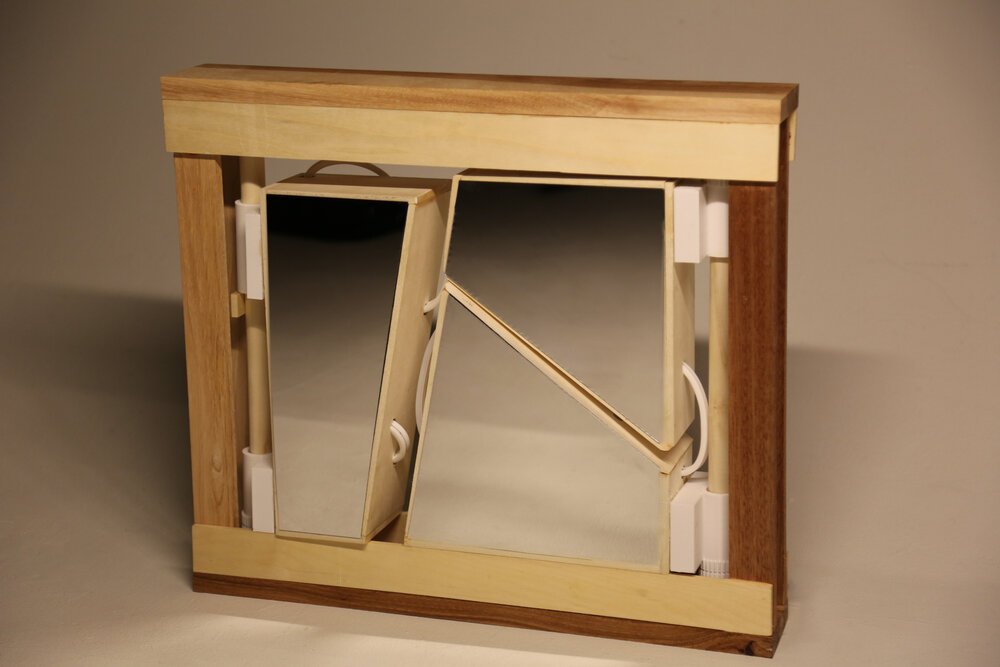Balance is the state we all strive for throughout our lives
-
Mirror World
-
12/06/2020
-
24 in* 24 in*6 in
-
Walnut hardwood, Roaplight and Two way mirror
-
In my second semester, a book called Designing Design by Kenya Hara, particularly resonated with me, and inspired the way I think about my work.[1] I am particularly interested in the idea of redesigning something original while inviting the audience to appreciate different perspectives of design applied to things in our world. Based on this idea, I designed a third work, the Mirror World. When people think of mirrors, they usually think of complete and regular mirrors, but I have divided them into three irregular parts and inserted curved lights to redefine the impression of mirrors in people's minds.
In the past, due to poor communication, people would believe in the little information in their hands, and they were able to distinguish right from wrong in so few simple pieces of information. Today, in the 21st century, our world is made up of colorful and messy data. If we blindly accept it as before, our lives will be highly complicated. Only by selectively receiving information can we survive better in the future.
The world inside the mirror comes from this question. Our world is outside the mirror and audiences are looking at the thing that happened inside the mirror that reflects some of our problems. We think we are looking at the world in the mirror, but we are looking at ourselves.
One of the chapters that interest me most is called “Re-design.” In it, Hara details the events of a very interesting exhibition in which every designer or artist was asked to make something different from the original design. The chapter inspired me to keep thinking about how I treat the mirror differently. People are used to looking at regular mirrors, such as square shape or round shape, meanwhile, most people do not like a broken mirror because it stands sharp and incomplete. But I think broken things can be beautiful as well, and that is why I wanted to try something different. I feel very fun with the process because I break it up and recombine it, which makes me feel I create a new thing—the mirror looks very similar to before, but not the same.
This work starts to move from the upper right corner and then moves to the lower right corner. It suggests that we are moving from no choice to too many choices, through which there is no better one. Some people may prefer the upper right part because it looks clean and simple, others may want to see the lower right part more because the combination of the curves creates infinite possibilities and stimulates people‘s desire to explore the maze. It just depends on different people’s flavors. And the last moving part is on the left which combines the features of the two next to it as if finding a balance.
I would like to share a great sentence that I read from Designing Design: “Technology has no point unless it subtly and activates the senses of its recipients.”[i]—Kenya Hara
Hara, Kenya. Designing Design. Baden: Lars Müller Publishers, 2017.
Hara. “Computer Technology and Design.” Designing Design, Lars Muller, Baden, 2017, pp. 434–438.






